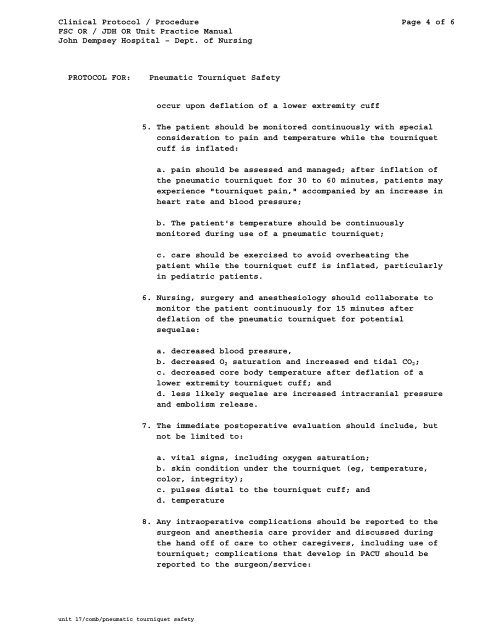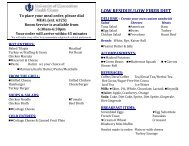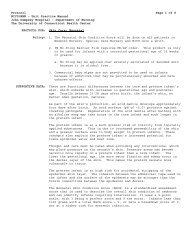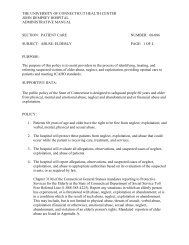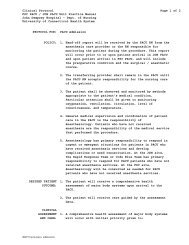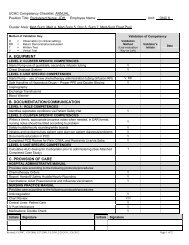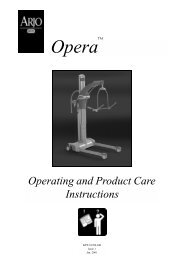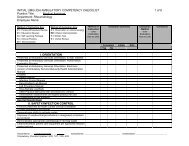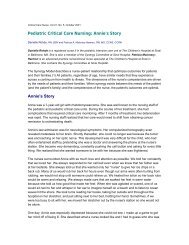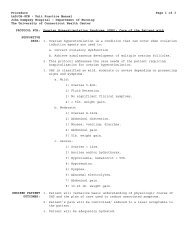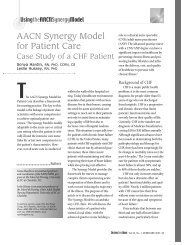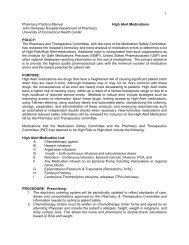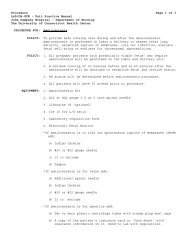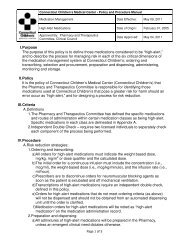Pneumatic Tourniquet Safety
Pneumatic Tourniquet Safety
Pneumatic Tourniquet Safety
You also want an ePaper? Increase the reach of your titles
YUMPU automatically turns print PDFs into web optimized ePapers that Google loves.
Clinical Protocol / Procedure Page 4 of 6<br />
FSC OR / JDH OR Unit Practice Manual<br />
John Dempsey Hospital – Dept. of Nursing<br />
PROTOCOL FOR:<br />
<strong>Pneumatic</strong> <strong>Tourniquet</strong> <strong>Safety</strong><br />
occur upon deflation of a lower extremity cuff<br />
5. The patient should be monitored continuously with special<br />
consideration to pain and temperature while the tourniquet<br />
cuff is inflated:<br />
a. pain should be assessed and managed; after inflation of<br />
the pneumatic tourniquet for 30 to 60 minutes, patients may<br />
experience "tourniquet pain," accompanied by an increase in<br />
heart rate and blood pressure;<br />
b. The patient's temperature should be continuously<br />
monitored during use of a pneumatic tourniquet;<br />
c. care should be exercised to avoid overheating the<br />
patient while the tourniquet cuff is inflated, particularly<br />
in pediatric patients.<br />
6. Nursing, surgery and anesthesiology should collaborate to<br />
monitor the patient continuously for 15 minutes after<br />
deflation of the pneumatic tourniquet for potential<br />
sequelae:<br />
a. decreased blood pressure,<br />
b. decreased O 2 saturation and increased end tidal CO 2 ;<br />
c. decreased core body temperature after deflation of a<br />
lower extremity tourniquet cuff; and<br />
d. less likely sequelae are increased intracranial pressure<br />
and embolism release.<br />
7. The immediate postoperative evaluation should include, but<br />
not be limited to:<br />
a. vital signs, including oxygen saturation;<br />
b. skin condition under the tourniquet (eg, temperature,<br />
color, integrity);<br />
c. pulses distal to the tourniquet cuff; and<br />
d. temperature<br />
8. Any intraoperative complications should be reported to the<br />
surgeon and anesthesia care provider and discussed during<br />
the hand off of care to other caregivers, including use of<br />
tourniquet; complications that develop in PACU should be<br />
reported to the surgeon/service:<br />
unit 17/comb/pneumatic tourniquet safety


